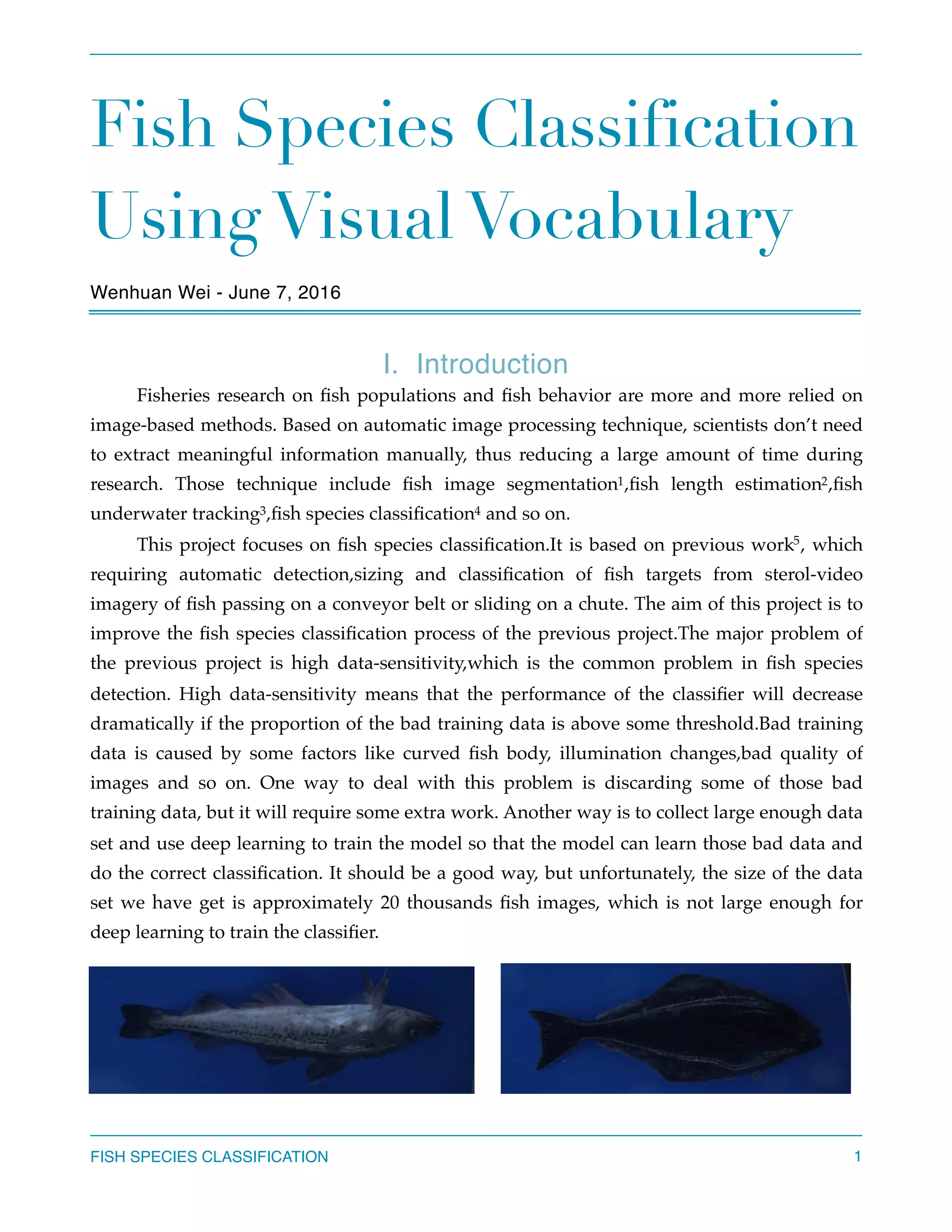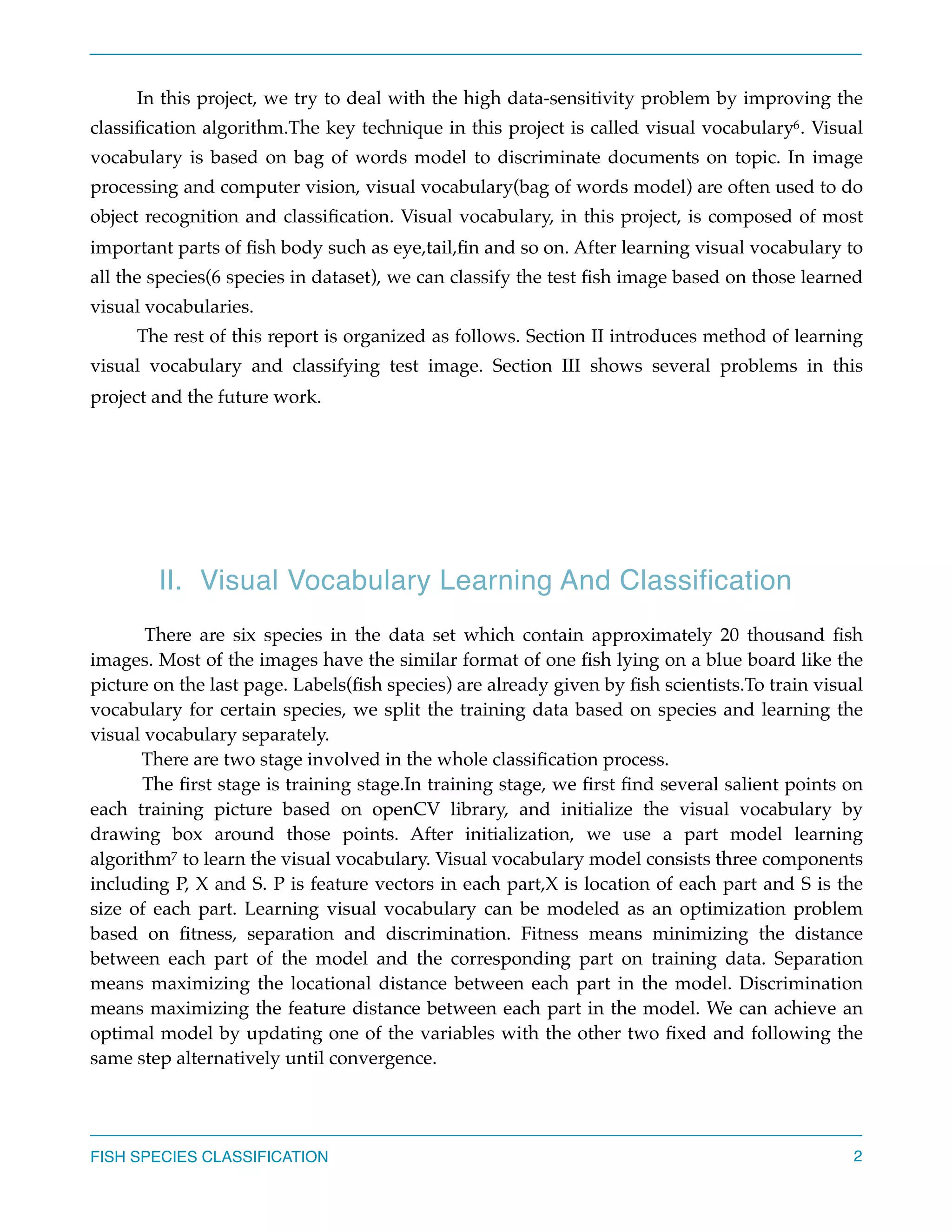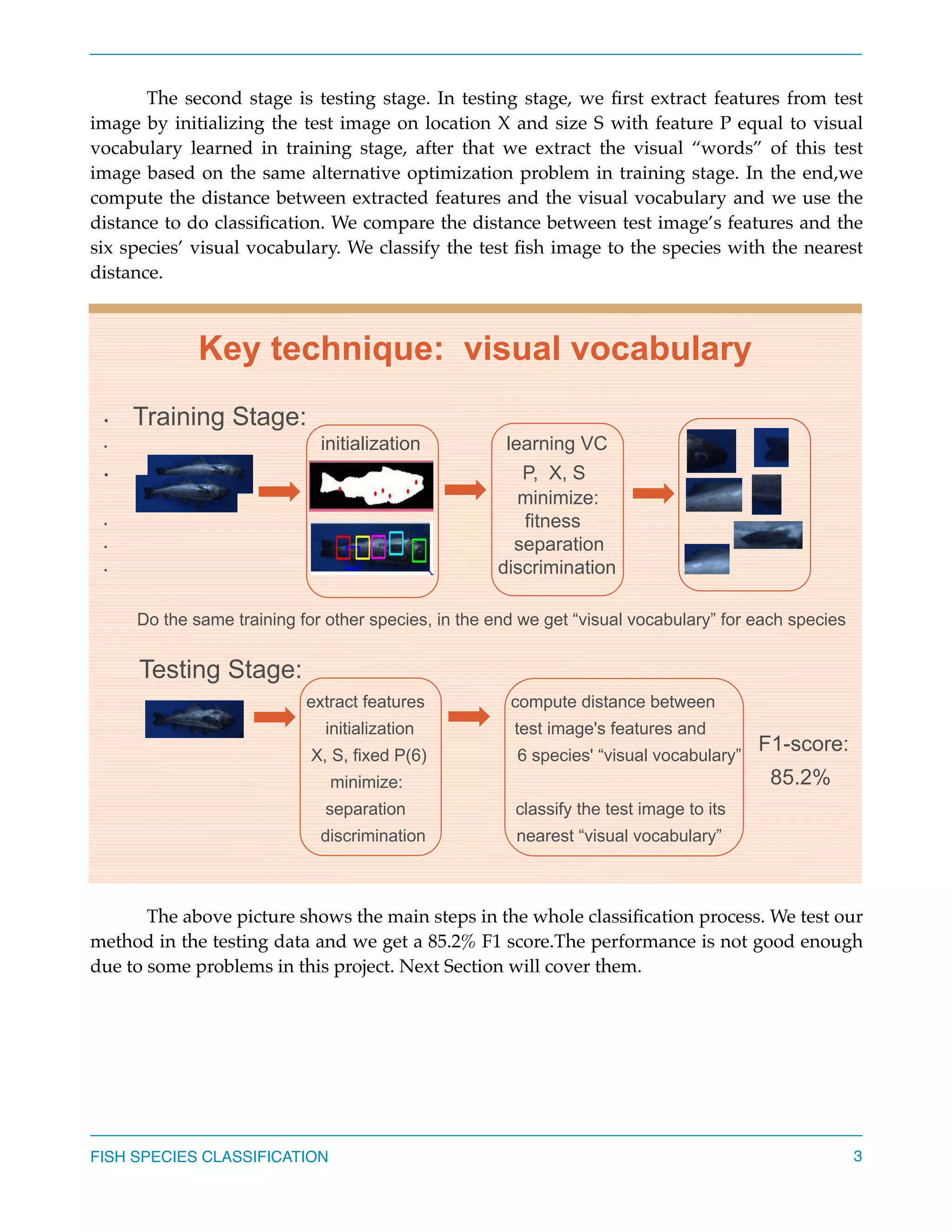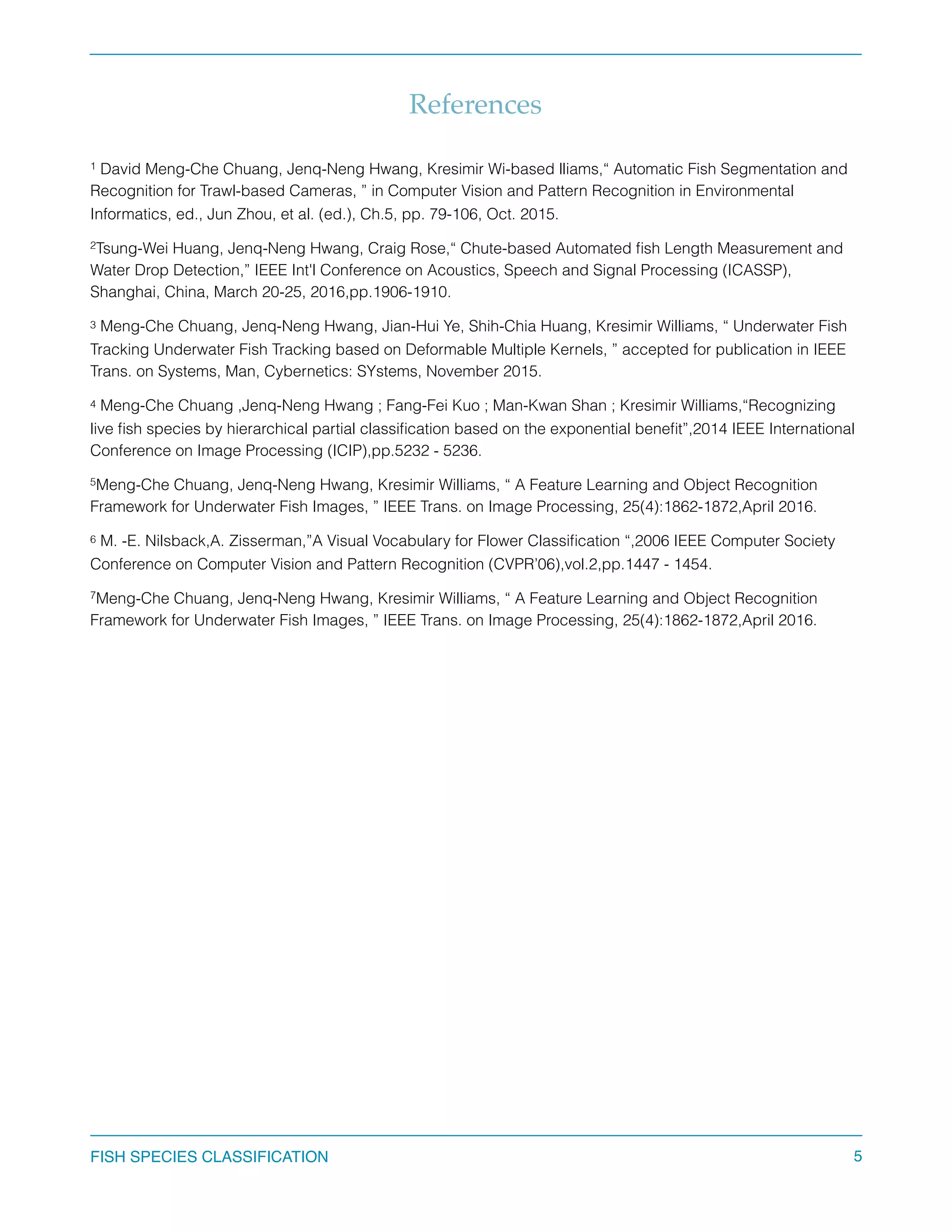The document describes a method for classifying fish species using visual vocabulary. It involves a two stage process of training and testing. In the training stage, visual vocabularies are learned for each species by finding salient points on images and modeling parts, locations, and features. In the testing stage, features are extracted from test images and compared to visual vocabularies to classify the fish by shortest distance. The method achieves 85.2% accuracy but has problems with species appearing different from sides and curved bodies. Future work to improve classification is suggested.




